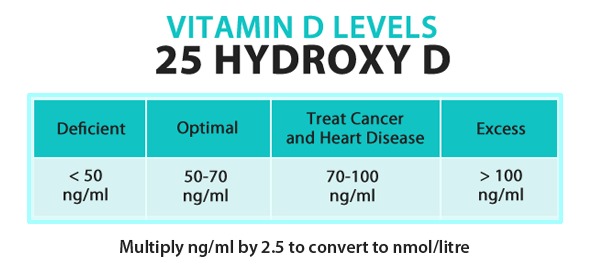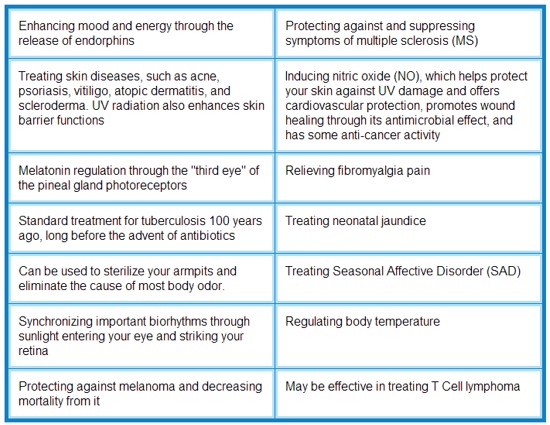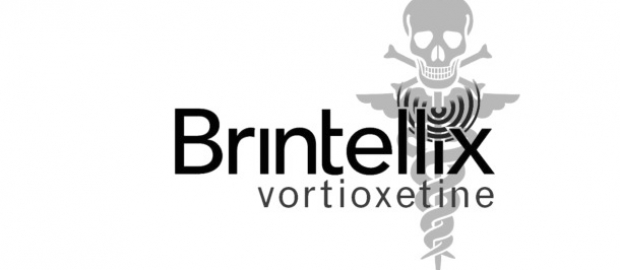Diseases/Conditions
Unneeded Skin Lesion Removals in 90% of Melanoma Patients
Dr. Mercola reports that doctors unnecessarily remove 90% of lesions in people diagnosed with melanoma, the deadly form of skin cancer. First do no harm?

Photo by Tom Scott
by Dr. Mercola
A new report in the Journal of the American Academy of Dermatology1 claims that 90 percent of melanoma patients may not only have had their skin lesions removed unnecessarily, but may also have actually increased their morbidity risk by doing so.
The study looked at 300,215 melanoma excision cases that occurred over 10 years at participating clinics and dermatopathology units in 13 countries.
As reported by The Tanning Blog:2
The purpose of the survey was to investigate the relationship between necessary excision of malignant melanoma and unnecessary removals of benign lesions. In non-specialized clinics the number of unnecessary removals was as much as 30 times higher than the necessary excisions. In specialized clinics, the ratio sank to less than 10 times.
This means that in some dermatologists’ clinics, 90 out of 100 ‘melanoma-victims’ were misled to have a piece of their skin sliced away. When extrapolating the average figures in the survey to one million American victims, as many as 900,000 may have suffered needlessly.
The lead author of the report attributed the unnecessary excisions to an increased awareness of patients who see anti-sun promotions such as “melanoma awareness” campaigns and run into the clinics demanding treatment.
Unfortunately, what this means is that while the melanoma epidemic appears to be real, based on surgical statistics, it actually paints a misleading picture since about 90 percent of “melanoma cases” are not real melanoma. The report highlights the necessity to get a second, and perhaps even a third opinion from a specialized clinic before going under the scalpel.
UV Rays Not Effective in Creating Vitamin D, Dermatologists Say
The issue of tanning can be confusing to say the least, as there’s no shortage of scare tactics employed. Information presented at American Academy of Dermatology’s Summer Academy Meeting.3
Bruce A. Brod, MD, FAAD, clinical associate professor of dermatology in the Perelman School of Medicine at the University of Pennsylvania in Philadelphia gave an overview of which is posted on the American Academy of Dermatology site, makes the following bizarre claim:
The tanning industry… touts UVA as a good source of vitamin D. However, the Federal Trade Commission (FTC) issued a consent order prohibiting the Indoor Tanning Association from making false claims about the health benefits of indoor tanning, and dermatologists point out that UV rays are not very efficient in creating vitamin D in the skin.4
In addition, the American Academy of Dermatology recommends that the public obtain vitamin D safely from a healthy diet that includes food naturally rich in vitamin D, foods and beverages fortified with vitamin D, and/or dietary supplements, rather than by sun exposure or indoor tanning, which can cause skin cancer. [Emphasis mine}
Say what?!
Who in their right mind would claim UV rays are ineffective at producing vitamin D in your skin? It is in fact the ONLY way to make your skin produce vitamin D! Oral supplementation does not make your skin produce it, and therefore may not provide identical health benefits as if it was produced by your own body in response to UV rays either from sunlight or a sun lamp. (On a side note, I’m not sure if the statement that UVA rays is touted as a good source of vitamin D by the tanning industry is a typo or not… It’s actually the UVB rays in tanning lamps — although they produce both, just like natural sunlight — that are responsible for vitamin D production in your skin.)
This is such a shocking proclamation it deserves closer scrutiny, lest people start getting even more confused about the role of sun exposure for their health. Unfortunately, based on the references listed, the matter gets even more convoluted, because when you follow the reference for this claim, it leads to a Federal Trade Commission notice, dated January 26, 2010,5 detailing the charges against the Indoor Tanning Association for “making false health and safety claims about indoor tanning.”
Reading through this FTC notice, there’s no further trail leading to any information about the direct claim that UV rays are inefficient at creating vitamin D in your skin… However, an FTC Consumer Alert brochure,6 the link to which can be found on the FTC notice, does state:
Myths and Reality — Here are some claims commonly made about indoor tanning – and the facts: ‘Indoor tanning is a safe way to increase vitamin D levels.’ Vitamin D has many roles in human health. For example, it is essential for promoting good bone health. While UVB radiation helps your body produce vitamin D, you don’t need a tan to get that benefit. In fact, 10 to 15 minutes of unprotected natural sun exposure on your face and hands 2 to 3 times a week during the summer gives you a healthy dose of vitamin D. You also can get vitamin D from food: good sources include low-fat milk, salmon, tuna, and fortified orange juice.
Is this the source for that preposterous claim? In reading through the page-and-a-half brochure, it’s the only statement that is relevant to the claim. In either case, the information published on the American Academy of Dermatology’s site is grossly misleading, as it either:
- does not provide a proper source for the remarkable statement that UV rays are “not very efficient in creating vitamin D in your skin,” or
- is in direct contradiction to the cited source, which clearly admits that UVB radiation helps your body produce vitamin D (you just don’t need a tan to get the benefit)
Exposing Hands and Face to Sun Twice a Week is Nowhere Near Enough
It’s also important to note that exposing just your face and hands for 10-15 minutes, twice or three times a week (as recommended in the FTC Consumer Alert on tanning), is NOT going to provide you with sufficient vitamin D to achieve the benefits that thousands of studies have now shown to be the case. Not even close!
First of all, it’s important to realize that when it comes to vitamin D, it’s your serum level that matters — not your dosage, whether you’re measuring dosage as time spent in the sun, or the oral dose of a vitamin D supplement. So the most important message is that you need to get whatever dosage is required to obtain a therapeutic level of vitamin D in your blood. The optimal vitamin D level has recently been raised to 50-70 ng/ml, and when treating cancer or heart disease, as high as 70-100 ng/ml.
Carole Baggerly, the director and founder of an organization called GrassrootsHealth, which is primarily focused on creating awareness about the profound importance of vitamin D for optimal health, actually conducted tests to determine just how much sun exposure she needed in order to reach therapeutic levels of vitamin D.
“Even in San Diego where I live, when they measured my [vitamin D] level it was 18 ng/ml. When we did a scientific test of what it’s going to take to get enough sun in San Diego… at my age – age is a factor in how much you absorb – we came to a test conclusion that it was going take 15 to 20 minutes a day in the prime time of UV, between 10 am and 2 pm, each and every day… with 40 percent of my body exposed,” she says.
To learn more about vitamin D’s impact on your health, especially as a way to prevent internal cancers, including breast cancer, please listen to this previous interview with Carole Baggerly.
Sun Exposure: Benefits Beyond D Production
While discussions about the health benefits from sun exposure typically center around vitamin D, which your skin produces in response to UVB rays, UVB exposure actually has a number of other health effects unrelated to vitamin D production — whether it’s from the sun or a safe tanning bed.
Carole Baggerly agrees that sun exposure is ideal not just for raising your vitamin D levels, but also because it may provide otherhealth benefits that we simply don’t fully understand yet. It’s quite possible however, that lack of regular sun exposure is at the heart of many of our current health issues. New evidence presented in the April-June issue of Dermato Endocrinology7 confirms that exposure to the sun in appropriate and measured timeframes has a number of health benefits unrelated to vitamin D production. The report states:
Solar ultraviolet (UV) radiation has been used since ancient times to treat various diseases. This has a scientific background in the fact that a large number of molecules (chrromophores) in different layers of the skin interacts with and absorbs UV.
Health benefits from sun exposure, besides vitamin D production, include:
Why I Advise Using the Sun or Safe Tanning Bed
Another article written by Richard J. Wurtman,8 while over 40 years old, still contains loads of interesting information about the health benefits of sunlight. If you have any interest, I strongly recommend you download this classic, superbly written 11-page PDF from the Massachusetts Institute of Technology. This article reveals the benefits of sun exposure and not merely swallowing a vitamin D tablet or capsule.
I am beyond convinced that you are missing out big time if you strictly rely on vitamin D supplements, (or worse, fortified foods) rather than sunshine. If you are on the fence about this or don’t believe me, please read Dr. Wurtman’s classic article.
Just as an example, he points out the role of sunlight on synchronizing the hormonal rhythms of your body. Melatonin, for example, which is synthesized by your pineal gland, is profoundly affected by light and dark, and proper exposure to bright sun during the day is important for maintaining your internal rhythm. Melatonin, as you may recall, is also a potent antioxidant with cancer-fighting properties.
Sensible Sun Exposure May Be Protective Against Melanoma
While you’re not likely to receive this information from dermatologists and cancer groups, there’s evidence showing that exposure to UVB light is actually protective against melanoma. For example, indoor workers actually have a higher risk of melanoma than outdoor workers, as documented in The Lancet,9 suggesting that chronic sun exposure can indeed have a protective effect.
Another study in Medical Hypotheses10 suggested that indoor workers may have increased rates of melanoma because they’re exposed to sunlight through windows, and only UVA light, unlike UVB, can pass through window glass. (While UVB light gives you that tanned look and causes your skin to produce vitamin D, UVA rays are the ones associated with skin damage and skin cancer.)
Since indoor workers, who get three to nine times less solar UV exposure than outdoor workers, are missing out on exposure to the beneficial UVB rays, they will have lower levels of vitamin D and therefore miss out on the “built-in” cancer protection offered by regular exposure to the sun, or a sun lamp.
The study even noted that indoor UV actually breaks down vitamin D3 formed after outdoor UVB exposure, which would therefore make vitamin D3 deficiency and melanoma risk even worse. A number of associations between regular sun exposure anddecreased melanoma risk can be found in the medical literature. For example, an Italian study published in the European Journal of Cancer in 2008,11 confirms and supports earlier studies showing improved survival rates in melanoma patients who were exposed to sunlight more frequently in the time before their melanoma was diagnosed.
Sensible Sun Exposure: How to Maximize Benefits While Minimizing Risks
While sun exposure is your best source for vitamin D, it’s important to understand that not all sun exposure will allow for vitamin D production, and perhaps this is another possible explanation for the utterly bizarre statement that UV rays are inefficient at producing vitamin D in your skin… However, makinghis kind of generalization amounts to nothing short of scientific ignorance.
Here’s how it works:
Sunlight is composed of about 1500 wavelengths, but the only wavelength that makes your body produce vitamin D are UVB-rays, when they hit exposed skin. Now, the UVB-rays from the sun must pass through the atmosphere in significant concentration and intensity to cause your skin to make vitamin D.
This obviously does not occur in the winter for most of us, but the sun’s rays are also impeded during a fair amount of the year for people living in temperate climates. In fact for about half the US more than half the year the UVB concentration is not sufficient to generate vitamin D, no matter how much skin is exposed at the height of the sun level.
Due to the physics and wavelength of UVB rays, they will only penetrate the atmosphere when the sun is above an angle of about 50° from the horizon. When the sun is lower than 50°, the ozone layer reflects the UVB-rays but let through the longer UVA-rays.
So how do you know if you have entered into the summer season and into the time of year, for your location, where enough UVB can actually penetrate the atmosphere to allow for vitamin D production in your skin?
The first step is to determine the latitude and longitude of your location. You can easily do this on Google Earth, or if you are in the U.S. you can use the TravelMath Latitude Longitude Calculator to find your latitude and longitude. Once you have obtained that you can go to the U.S. Navy site to calculate a table to determine the times and days of the year that the sun is above 50 degrees from the horizon.
Translated to the date and time of some places on the globe, it means for example: In my hometown of Chicago, the UVB rays are not potentially present until March 25, and by September 16th it is not possible to produce any vitamin D from the sun in Chicago. Please understand it is still only theoretically possible to get UVB rays between those dates. If it happens to be cloudy or raining, the clouds will also block the UVB rays, preventing vitamin D production that particular day. For a more detailed understanding of this, please view the following video, and/or read through the corresponding article.
Even Easier if You Have Apple System
Alternatively, if you have an iPhone or iPad you can download a free app called D Minder, which will make all the calculations for you. It was made by an Apple developer who was motivated to simplify the process after he watched the video above.
From a health perspective, it doesn’t make much sense to expose your skin to the sun when it is lower than 50 degrees above the horizon because you will not receive any valuable UVB rays, but you will expose yourself to the more dangerous and potentially deadly UVA rays. UVA’s have a longer wavelength than UVB and can more easily penetrate the ozone layer and other obstacles (like clouds and pollution) on their way from the sun to the earth. UVA is what radically increases your risk of skin cancer and photoaging of your skin. So while it can give you a tan, unless the companion UVB rays are available you’re likely doing more harm than good and should probably stay out of the sun to protect your skin.
During the times of the year when UVB rays are not present where you live you have two options: either use a safe tanning bed or oral vitamin D3.
Sources:
- 1 Journal of the American Academy of Dermatology July 2012
- 2 The Tanning Blog July 2012
- 3 American Academy of Dermatology August 16, 2012
- 4 Federal Trade Commission
- 5 Federal Trade Commission
- 6 FTC Consumer Alert: Indoor Tanning (PDF)
- 7 DermatoEndocrinology April/May/June 2012; 4(2): 109-117
- 8 The Effects of Light on the Human Body by Richard J. Wurtman (PDF)
- 9 The Lancet February 2004; 363(9410): 728 – 730
- 10 Medical Hypotheses April 2009; 72(4): 434-443
- 11 European Journal of Cancer 2008 Jun;44(9):1275-81
Tagged conventional medicine, Journal of the American Academy of Dermatology melanoma, melanoma, melanoma sun, melanoma sunlight, melanoma surgery, melanoma tanning, melanoma vitamin d, mercola melanoma, modern medicine, skin lesion removal, skin lesions melanoma, vitamin d















